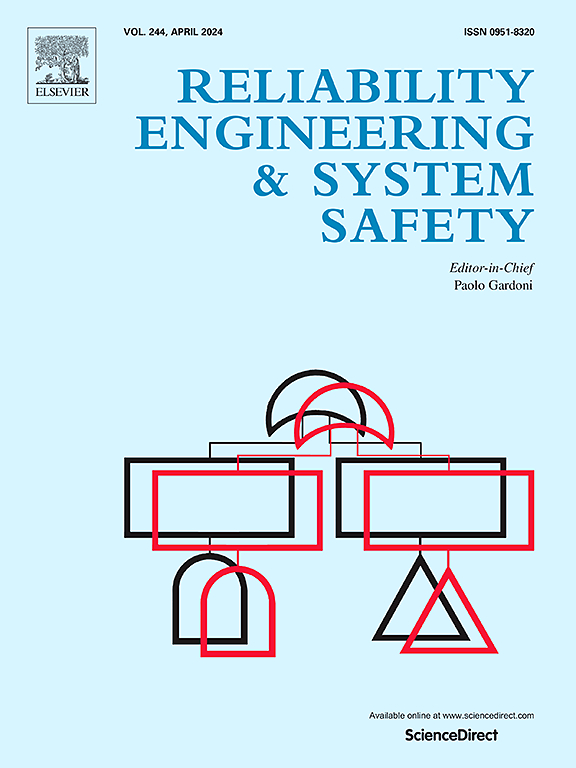An unsupervised framework for dynamic health indicator construction and its application in rolling bearing prognostics
IF 9.4
1区 工程技术
Q1 ENGINEERING, INDUSTRIAL
引用次数: 0
Abstract
Health indicator (HI) plays a key role in degradation assessment and prognostics of rolling bearings. Although various HI construction methods have been investigated, most of them rely on expert knowledge for feature extraction and overlook capturing dynamic information hidden in sequential degradation processes, which limits the ability of the constructed HI for degradation trend representation and prognostics. To address these concerns, a novel dynamic HI that considers HI-level temporal dependence is constructed through an unsupervised framework. Specifically, a degradation feature learning module composed of a skip-connection-based autoencoder first maps raw signals to a representative degradation feature space (DFS) to automatically extract essential degradation features without the need for expert knowledge. Subsequently, in this DFS, a new HI-generating module embedded with an inner HI-prediction block is proposed for dynamic HI construction, where the temporal dependence between past and current HI states is guaranteed and modeled explicitly. On this basis, the dynamic HI captures the inherent dynamic contents of the degradation process, ensuring its effectiveness for degradation tendency modeling and future degradation prognostics. The experiment results on two bearing lifecycle datasets demonstrate that the proposed HI construction method outperforms comparison methods, and the constructed dynamic HI is superior for prognostic tasks.
健康指标(HI)在滚动轴承退化评估和预测中起着关键作用。虽然已经研究了各种HI构建方法,但大多数方法依赖于专家知识进行特征提取,而忽略了捕获隐藏在顺序退化过程中的动态信息,这限制了构建HI的退化趋势表示和预测能力。为了解决这些问题,通过无监督框架构建了一个考虑HI水平时间依赖性的新型动态HI。具体而言,由基于跳过连接的自编码器组成的退化特征学习模块首先将原始信号映射到具有代表性的退化特征空间(DFS),在不需要专家知识的情况下自动提取基本的退化特征。随后,在该DFS中,提出了一种新的嵌入内部HI预测块的HI生成模块,用于动态HI构建,其中保证了过去和当前HI状态之间的时间依赖性并显式建模。在此基础上,动态HI捕获了降解过程中固有的动态内容,确保了其对降解趋势建模和未来降解预测的有效性。在两个轴承生命周期数据集上的实验结果表明,本文提出的HI构建方法优于对比方法,构建的动态HI更适合于预测任务。
本文章由计算机程序翻译,如有差异,请以英文原文为准。
求助全文
约1分钟内获得全文
求助全文
来源期刊

Reliability Engineering & System Safety
管理科学-工程:工业
CiteScore
15.20
自引率
39.50%
发文量
621
审稿时长
67 days
期刊介绍:
Elsevier publishes Reliability Engineering & System Safety in association with the European Safety and Reliability Association and the Safety Engineering and Risk Analysis Division. The international journal is devoted to developing and applying methods to enhance the safety and reliability of complex technological systems, like nuclear power plants, chemical plants, hazardous waste facilities, space systems, offshore and maritime systems, transportation systems, constructed infrastructure, and manufacturing plants. The journal normally publishes only articles that involve the analysis of substantive problems related to the reliability of complex systems or present techniques and/or theoretical results that have a discernable relationship to the solution of such problems. An important aim is to balance academic material and practical applications.
 求助内容:
求助内容: 应助结果提醒方式:
应助结果提醒方式:


